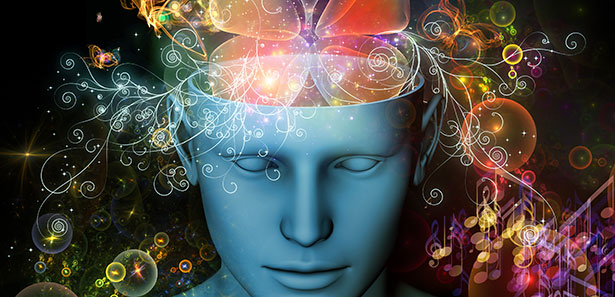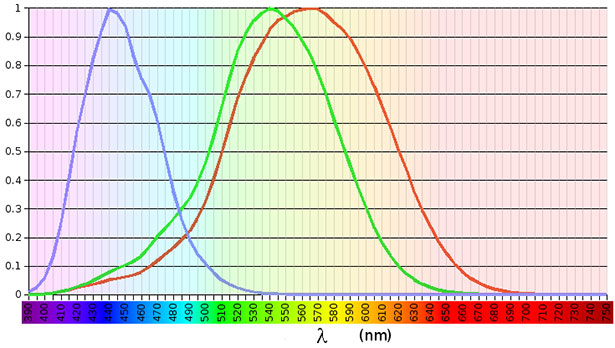How real are colors: From the waves to the stimulus - Part 2

Are colors real or just a deception of our brain? © agsandrew/ thinkstockIs a tree really green - even if nobody sees it? And when we see colors, do we share this experience with others, or does each individual perceive something different? Mankind has been preoccupied with these questions for thousands of years - and science has given and gives different answers to them.
This is the second part of this article series. If you have missed the first, don't forget to catch up on it:
Part 2: From the waves to the stimulus. Physics and color perception.
Is our perception of the senses really only semblance - or is the tree green after all? Can we give our perception of colour objectivity, and if so, in what way? Let us begin with the observation that neither physics nor neurobiology can reduce colors to physical processes, i. e. explain them satisfactorily.
Physics and Perception
Physics has excluded the sensation of colours from its section of the world. What remains are reflections of light rays of different wavelengths at interfaces - but these are not colors. Let's assume that a subject on a meadow would see a green tree: Even a comprehensive physical examination and description of all that is happening outside and inside her body would not allow any statement about her color perception.
Without our experience of color, science would have no reason to suspect its existence - just as little as one could not predict its foul odor from fluctuations in air pressure as a result of hearing sounds or from the structure of hydrogen sulphide. From a scientific point of view, only the necessary prerequisites for qualitative sensory perception can be stated, but they cannot be explained by themselves.
Correlations instead of reality?
Some people will probably read this in a head-shaking way: Isn't it possible to physically measure colours, to produce them by appropriate mixing of light waves of different frequencies or to produce them in chemical processes? Yes and no, because what we measure or produce is only correlated with the colors we perceive - light waves as such are not colored, and even the chemist sees colors as indicators of elementary processes that can be represented by reaction equations but are not colored themselves.

Sensitivity profile of the three types of cones in our retina. The reaction of the photoreceptors to colored light - and thus the purely physiological side of color vision - is called color valence. © Pieter Kuiper / CC-by-sa 3.0There is no doubt that we need the light waves that irritate the retina so that we can see something, or the sound waves that cause our eardrum to vibrate so that we can hear sounds. But we see no light waves and hear no sound waves, but colours and tones. The fact that these measurable waves themselves are not colored or loud is no reason to deny the reality of colors and tones, as neuro-constructivists do. The waves are just the transmission media for our perception.
Certainly, in the purely physically describable world there are no colours, only their correlates. However, after all, we know a wealth of other characteristics of reality, which also fall through the rather rough raster of physical descriptions - such as the fertility of grapevine, the hierarchy of a pack of wolves, the constitution of the USA or the German export surplus in 2017 - should all this not mean anything, just because physics has nothing to say about it?
Source: Prof. Dr. Dr. Thomas Fuchs, Universität Heidelberg: Ist der Baum Grün?


wow so amazing never been think so deeply as you haf explained it ... im gald to see your great post and i love scientific knowledge keep it up @n3blu4
Thank you...sorry for the late upvote....I was running out of time yesterday.
I am glad you like my article.
Feel free to read on if you like:
How real are colors: From the stimulus to the subjective sensation - Part 3
I remember this topic being a popular thought experiment/debate topic amongst my friend group back when I was in high school!
We talked about how we thought it was impossible to prove that we see the same colors as everyone else. Has anyone else talked about this with friends?
I'm glad to see that there is actually some science/data behind this stuff! Thanks for the post!
Hey @fellows,
thanks for your input. I was talking about color perception a lot with my brother when I was much younger. In a way like: "Do I see the blue color the same way as you do?"
Fell free to read the next part if you like:
How real are colors: From the stimulus to the subjective sensation - Part 3
I see we both have talked about this stuff since we were a young age! I'll definitely check out the next part. Cheers!
Thanks!
wow that's an amazing full of science im glad to see you again very important and very scientific knowledge you have got here keep it up @n3blu i always been waiting for your post ☺
Thank you!
Next part:
How real are colors: From the stimulus to the subjective sensation - Part 3
it's amazing knowledge really liked it alot so scientific and interesting i just want to know more so i will be looking forward for your new post
Thank you!
If you like to give the next part a shot:
How real are colors: From the stimulus to the subjective sensation - Part 3
very interesting read :) looking forward to reading more of your posts.
Thanks a lot!
Here we go :-) :
How real are colors: From the stimulus to the subjective sensation - Part 3
This post has received a 0.88 % upvote from @booster thanks to: @n3bul4.